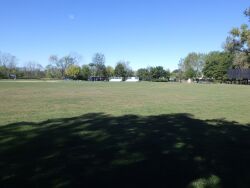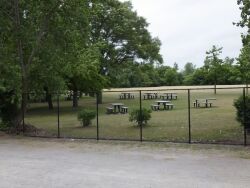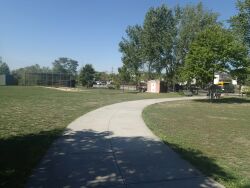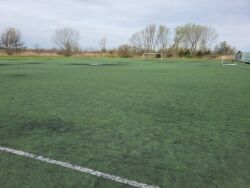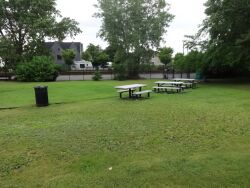Idlewild Park
Salt Marshes in New York City - Idlewild Park
Salt marshes play a critical role in the support of human life, acting as natural filtration systems by trapping pollutants that would otherwise contaminate our bays and oceans. Salt marshes have the ability to absorb fertilizers, improve water quality, and reduce erosion. They are also among the richest wildlife habitats.
Idlewild Park is on the Northwest border of John F. Kennedy International Airport. Land from the park has also been ceded to the Port Authority of New York and New Jersey for the construction of the Nassau Expressway. Currently, Idlewild Park houses a garage facility for the Department of Transportation (DOT). Despite this construction, Idlewild Park contains sandy grasslands, a unique dune swale, and one of the richest salt marshes in southeast Queens.
When the last of the glaciers melted 7,000 years ago, the oceans rose to their present levels. Sediments washed from the land were deposited offshore in narrow sandy strips, forming long islands parallel to the shoreline. These barrier beaches received the pounding surf on their ocean side, but had calm, protected bays behind their landward shores. While the waters were calm enough for vegetation to take root, the presence of saltwater made survival difficult. One species, however, saltmarsh cordgrass (Spartina alterniflora), was able to colonize the flat expanses of sand and silt, which were covered twice a day by the ocean’s tides. Today, the grass is still found along the Atlantic coast.
As this specialized grass spreads, its stems trap floating debris. Sediments and particles of decaying matter slowly build up, forming nutrient-rich mud. This mud, called detritus, supports life on the marsh. It is the basis of a complex food web in which energy is passed from one organism to another. The fiddler crab (Uca) and ribbed mussel (Geukensia demissa) have developed a mutually beneficial relationship with the cordgrass. While the crabs and mussels benefit from feeding on decaying matter trapped within cordgrass roots, cordgrass gains from the fiddler’s burrowing, which aerates the soil, and the mussel’s excretion, which provides necessary nitrogen.
At the end of each season, the cordgrass dies, creating a spongy peat. Each year’s peat layer raises the surface of the marsh, enabling it to colonize new territory. A variety of plants with less salt tolerance can colonize the peat, as it is out of the range of most of the high tides. This causes the formation of two separate plant communities, the intertidal marsh and the salt meadow. A third type of salt marsh community is the mudflat. Each of these communities has its own distinctive vegetation, insects, fish, birds, and mammals that have adapted to survive in a saltwater environment. While salt marshes do not have a very wide variety of species, the volume of life present is remarkable.
Since industrialization, human activity has destroyed many marshes. Where marshes are disturbed, common reed (Phragmites australis
Check out your park's Vital Signs
Clean & Safe
Green & Resilient
Empowered & Engaged Users
Share your feedback or learn more about how this park is part of a
Vital Park System



